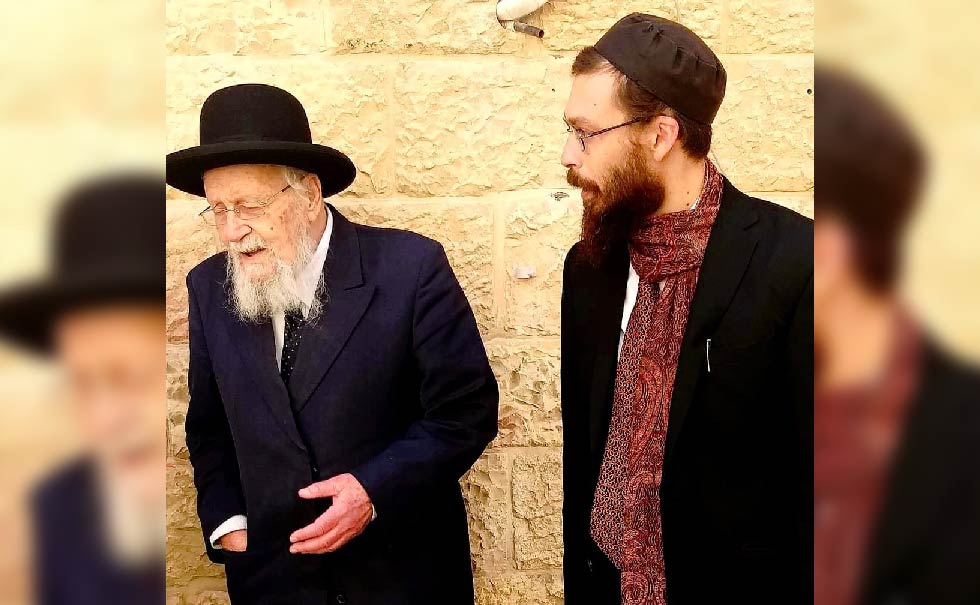The Idol of Literalism
Reform, Satmar, Messianic Judaism, and various other groups including the Torah mainstream all have something in common:
Normally, such a statement is bound to offend the majority of Torah observant Jews, if not put one at odds with the standard Orthodox rhetoric of correctly distancing themselves from such breakaway cults.
Not that the theologies, philosophies, approaches, or conclusions of the above groups are remotely similar, nor is their reasoning: The common thread is that various groups indulge in taking Midrashic/Kabbalistic metaphorical imagery literally in an attempt to prove their deviation from the Halachic norm.
Whether supporting/opposing current social trends, stringencies, customs, fashions, and a myriad of various other examples – all of them require one essential element:
The literal acceptance of Aggadita to promote an already held socially prevalent view.
This is, so to speak, sculpting the Torah to fit our demands and is not a new phenomenon whatsoever:
Rav Hai Gaon, Rav Sherira Gaon, Shmuel Hanagid, Rambam, and other major Chachamim are more inclined to say outrightly that such an approach of the literalism with the Midrashim is not only not intended, but some even saying that it is outrightly forbidden to do so1:
Here are some examples:
“הוו יודעים כי דברי אגדה לא כשמועה הם, אלא כל אחד דורש מה שעלה על לבו בגון אפשר, ויש לומר לא דבר חתוך.. לפיכך אין סומכין עליהם.. ואומדנא נינהו.”
R’ Hai Gaon 2
“We know that the words of Aggada are not like halacha; rather, everyone darshans whatever comes to his mind, like saying “It could be”, “It’s possible”; these are not (exact/precise/literal) things… therefore we are not to rely upon them… they are merely estimations”
Rabbi Shmuel HaNagid (on his introduction to Talmud in Berachot):
“כל פרוש שיבא בגמרא על שום ענין שלא יהיה מצוה זוהי הגדה ואין לך ללמוד ממנה אלא מה שיעלה על הדעת.. מה שפרשו בפסוקים כל אחד כפי מה שנזדמן לו ומה שראה בדעתו ולפי מה שיעלה על הדעת מן הפרושים האלו לומדין אותם והשאר אין סומכין עליהם”.
“Any commentary that comes in the Talmud that is not a mitzvah is called Aggadita and you shouldn’t learn anything from it except for what comes to mind… their explanations on passages consist of what came to mind for each scholar and whatever seems reasonable we should learn from them, but the rest we do not need to rely upon them.”
Rambam 3 on the subject:
כל אותן הדברים דברי הגדה ואין מקשין בהגדה וכי דברי קבלה הן או מילי דסברא אלא כל אחד ואחד מעיין בפירושן כפי מה שיראה לו, בו ואין בזה לא דברי קבלה ולא אסור ולא מותר ולא דין מן הדינין, ולפיכך אין מקשין בהן, ושמא תאמר לי, כמו שיאמרו רבים: וכי דברים שבתלמוד אתה קורא הגדה? כן! כל אלו הדברים וכיוצא בהן הגדה הן בעניינם, בין שהיו כתובין בתלמוד בין שהיו כתובין בספרי דרשות בין שהיו כתובין בספרי הגדה”, (אגרות הרמב”ם לר’ פנחס הדיין´).”
“All of these things are Aggadita, and regarding Aggadita we do not ask questions. Are these words transmitted from Moshe? or rather personal thoughts of each scholar?
Rather, everyone should study the explanations and according to what seems reasonable he should accept, and these are not ‘Divrei Kabbala‘ (words of tradition transmitted from Moshe), and not prohibitions, and not permissions, and not judgments, therefore we do not ask questions.
Perhaps you’ll ask me – like many others have asked: Are you calling words of the Talmud (only) Aggadita? Yes!
All of these things are Aggadita in their nature, whether they’re written in the Talmud, whether they are written as Drashot“.
The Rosh4:
“שכך דרך בעלי אגדה על סמך כל דהוא בונים דבריהם”
“That is the way of the authors of Aggadita, on the smallest foundation they build their words”
The Maharal5 elegantly sums up his approach into one simple line:
“The sages do not speak (in Midrash) of the physical at all; they speak of a world stripped of physicality.”
Whilst some of the Ba’alei Tosafos were more literally inclined, they even seem at times to include ideas that lean towards a belief in a corporeal model or anthropomorphism of Hashem that was, thankfully, universally rejected by our people – and clearly one gets the immediate sense that it is the vast majority of Poskim, Rabbis, and Chachamim from all groups across the ages who understood Midrash Aggadita to be non-literal in content and observed the obvious dangers with such an approach.
Today our nation is once again held hostage to the idea that certain Midrashic/Kabbalistic imageries are “literal” rather than metaphorical descriptions, certain “YouTube Rabbis” make usage of this mistaken practice in practically every video they publish and groups use the mechanics to allow/forbid/push any possible Hashgopha or world view regardless of how illogical or accepted by our people as a philosophy or theology.
We find descriptions of Gehinom/Hell (more akin to Dante’s inferno) and other such ideas used to bully and scare people into the concept of Torah observance, we find major Rabbinical thinkers called atrocious names publicly and slandered over their stances of interpretative Torah.
Perhaps even more worrying is the repeated trope that some kind of singular approach to Jewish theology, Torah study, and philosophical thought exists – rather than the obvious historical truth that a great divergence of opinion has always openly been present and celebrated provided it remained true to the Halacha.
When we contrast such an approach with sects that are outrightly rejected on purely ideological grounds and recognize that the principle itself is an error we must conclude that it is the approach rather than specific conclusions that we must ultimately reject as thinking Jews.
Rabbi Jonathan Goldschmidt 2021 ©
1) Various sources express this idea:
(Rashba Megillah 15a) (R’ Saadia Gaon, R’ Hai Gaon, Otzar HaGeonim, Chagiga 13; Otzar HaGeonim, Pesach, 3a) (Meiri, Magen Avot 1) (Shiltei Giborim, Avoda Zara, 6a) (Ramban in his Disputation, also brought in responsa Chatam Sofer 17) (Ramban Yevamot 71:) (Ritva, Shabbat 75:) (Rabbeinu Chananel, Otzar Geonim, Respona 50).
– there are many other examples
2) Otzar HaGeonim: Chagiga 13
3) Rambam: Letter to Rabbi Pinchas HaDayan
4) Responsa of the Rosh 13:21
5) Be’er ha-Golah (Be’er Shishi)




